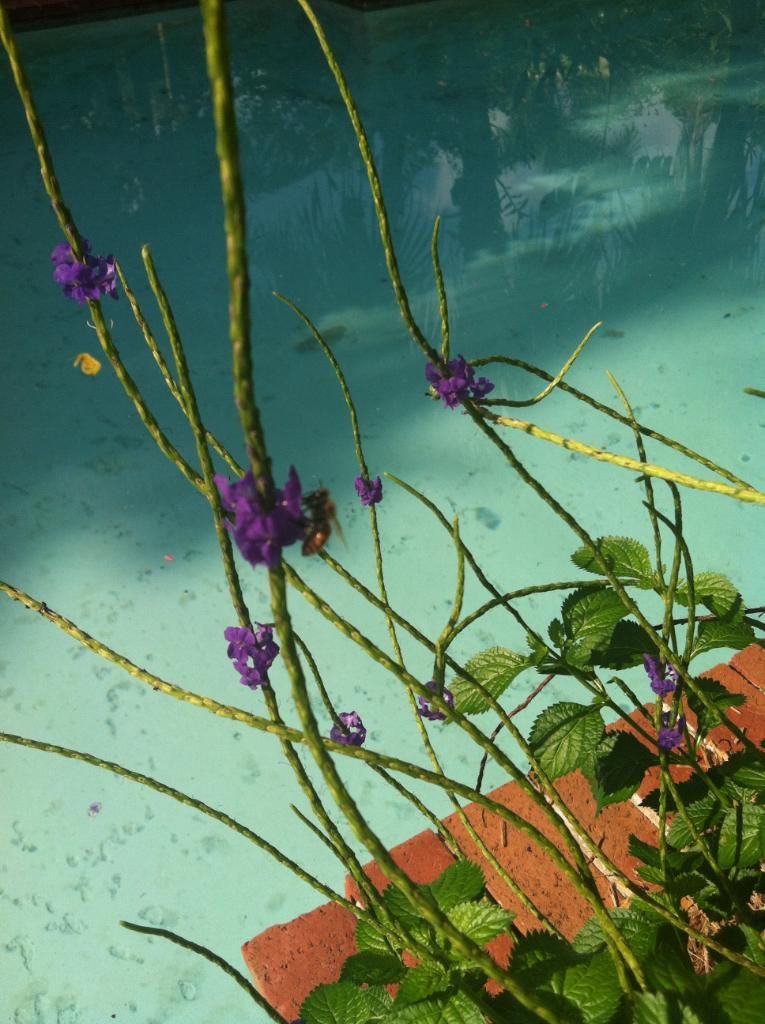 | 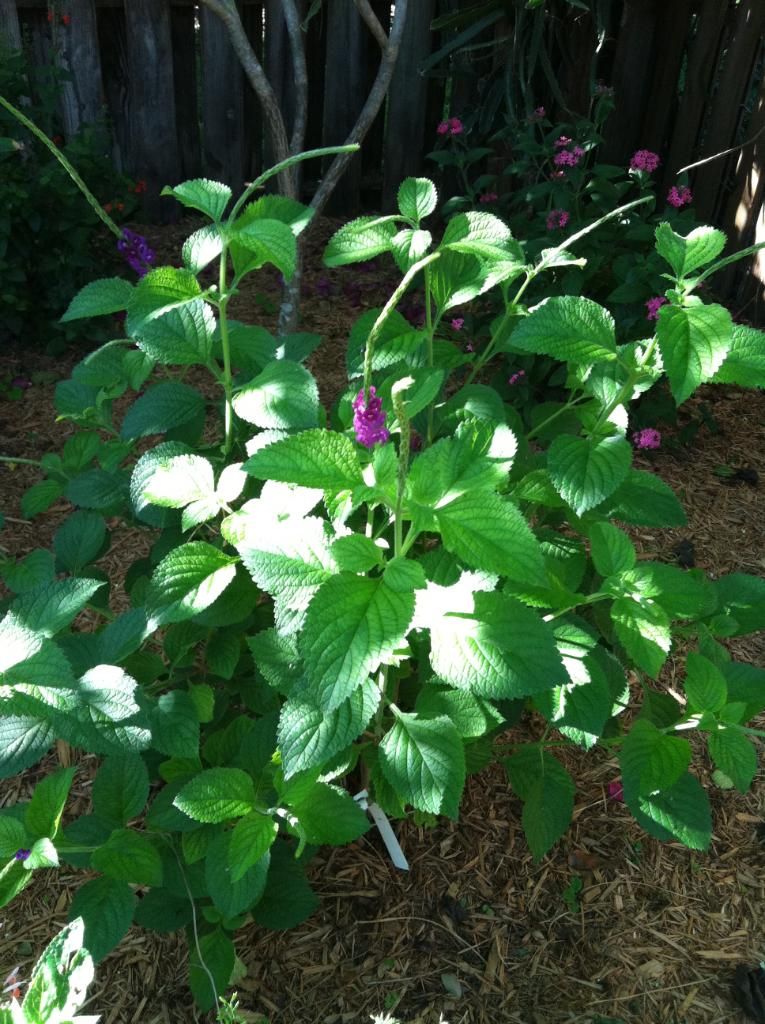 |
There are a couple of trees that are blooming right now. One is a beautiful Scarlet Red Crepe Myrtle. It is one of my favorite trees. Mine is a couple of years old and I feel that it is struggling at times. I think it should have grown in two years more than it has. I fertilized it very well with both an organic and inorganic fertilizer this year. I try to keep the new growth at the trunk near the ground cut back, but still it is very slow growing. Right now it is in bloom and looks beautiful. Someday this will be a 10-15 ft tree with gorgeous blooms. I was looking at it the other day and discovered it was loaded with honey bees. I was very surprised and happy that my bees have another source for pollen and nectar. My brother was in his yard this morning and said he could hear the bees 30 ft away as they were all over the Crepe Myrtle. The picture of the white Crepe Myrtle is his tree.
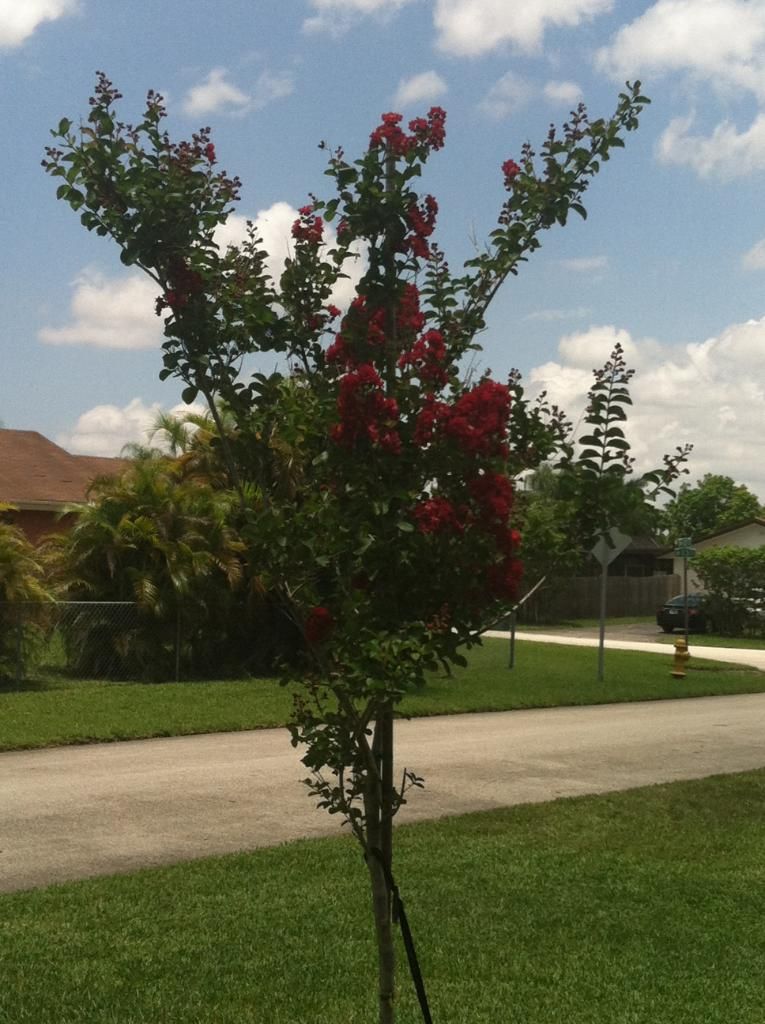 | 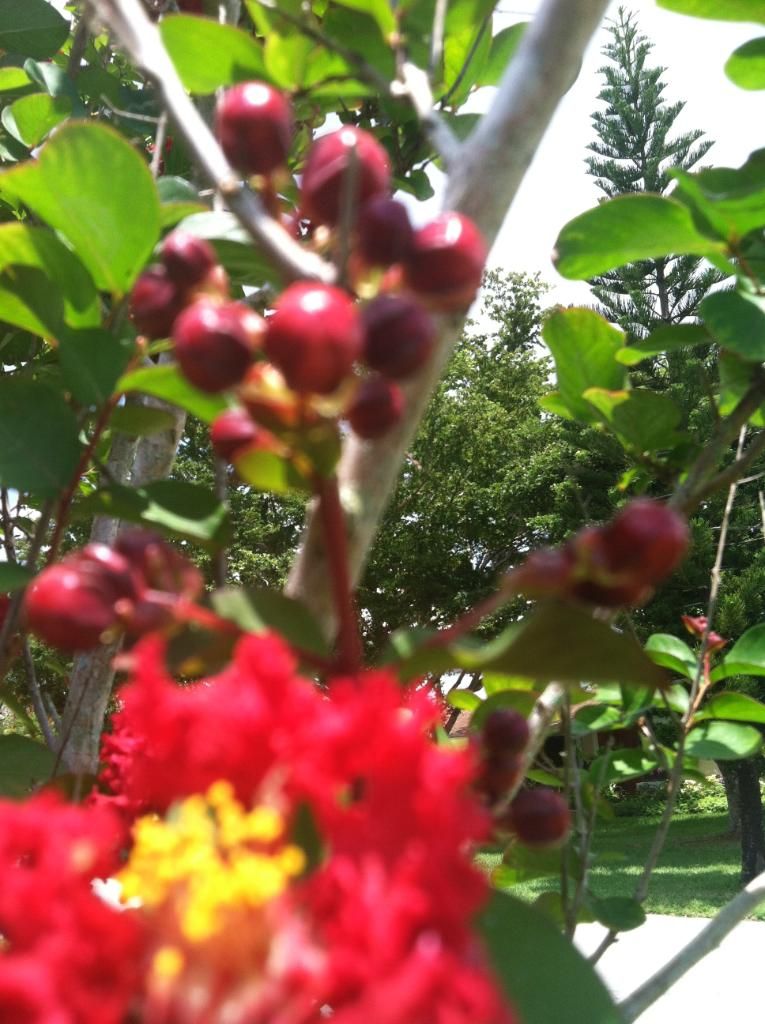 |
The Jasmine Tree Murraya paniculata 'Lakeview' is also in bloom. It has deliciously fragrant flowers that you can smell as soon as you exit the backdoor. I love when this tree is in bloom. I have this tree in a container on my patio. If I were to plant this in the ground it could grow 10-15 ft. I love having it grow on my patio so that when it is in bloom I can experience its delicious fragrance. The bees love this tree. I have also noticed some native bees on this tree. Not sure exactly whether they are yellow jackets or native bees. I need to learn more about the different native bees in Florida. It has only been recently that I’ve put up the mason bee houses.
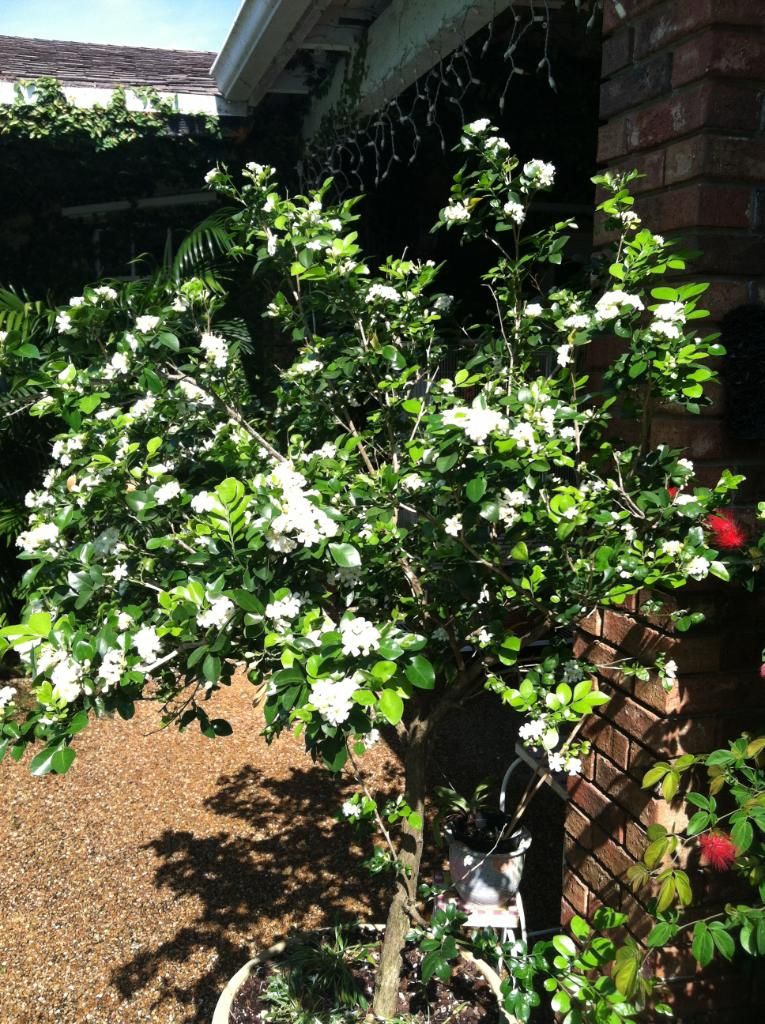 | 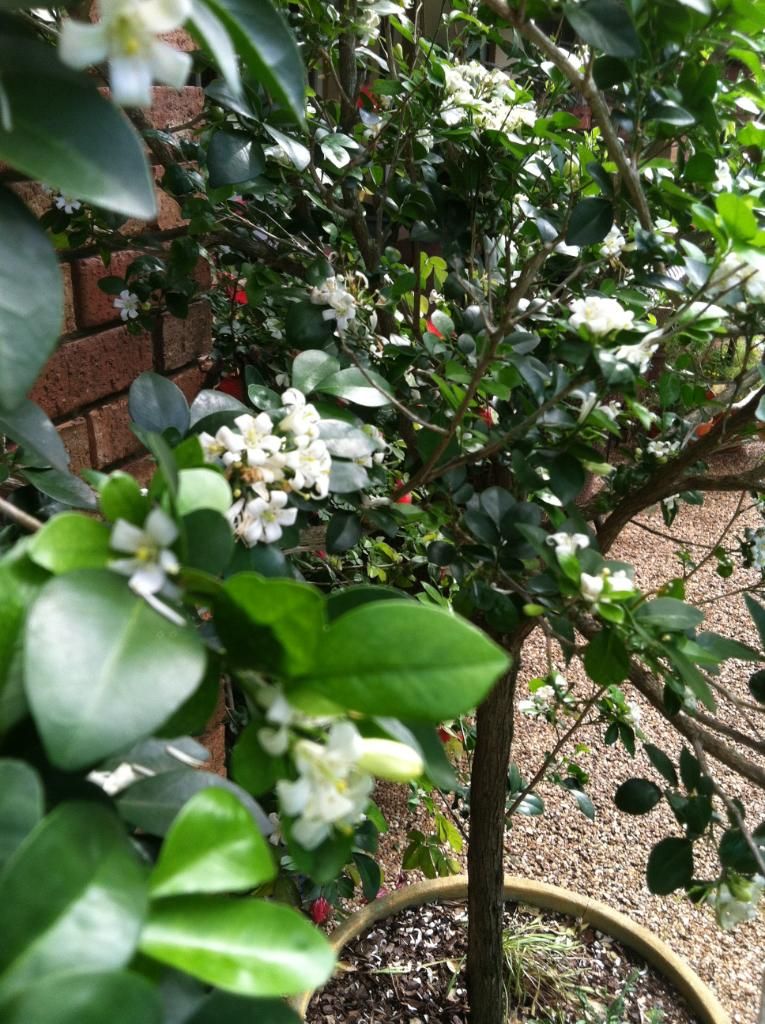 |
The Jatropha tree is another variety that is one of the bees and butterflies favorite in the yard. Jatropha is a genus of approximately 175 different succulent plants, shrubs and trees (some are deciduous, like Jatropha curcas), from the family Euphorbiaceae. I believe I actually have two different species in my yard, Jatropha Integerrima and Jatropha gossypiifolia. The bees love jatropha integerrima. It has little red flowers. The Jatropha has a tendency to drop its leaves, so it can be a little messy. I have mine around the pool. I always have red flowers and leaves in the pool. The butterflies and bees love it so much that I would never move it to another location. My husband probably would love me to, because he is always skimming up the flowers and leaves. To keep it looking lush and green I prune mine back at least twice a year. The other jatropha tree I obtained many years ago from Butterfly World. It was very small at the time, about 6 inches high, and now it is about 8 ft tall. I was told by Butterfly World that it was from Costa Rica. I believe this species of jatropha was being grown for biodiesel fuel.
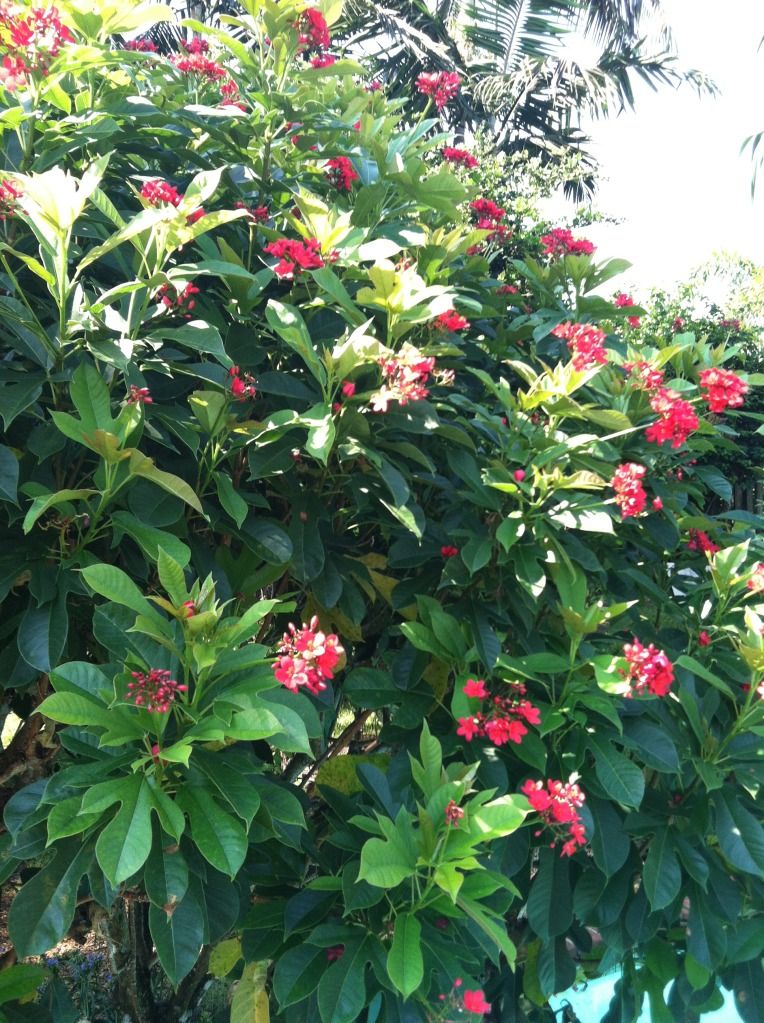 | 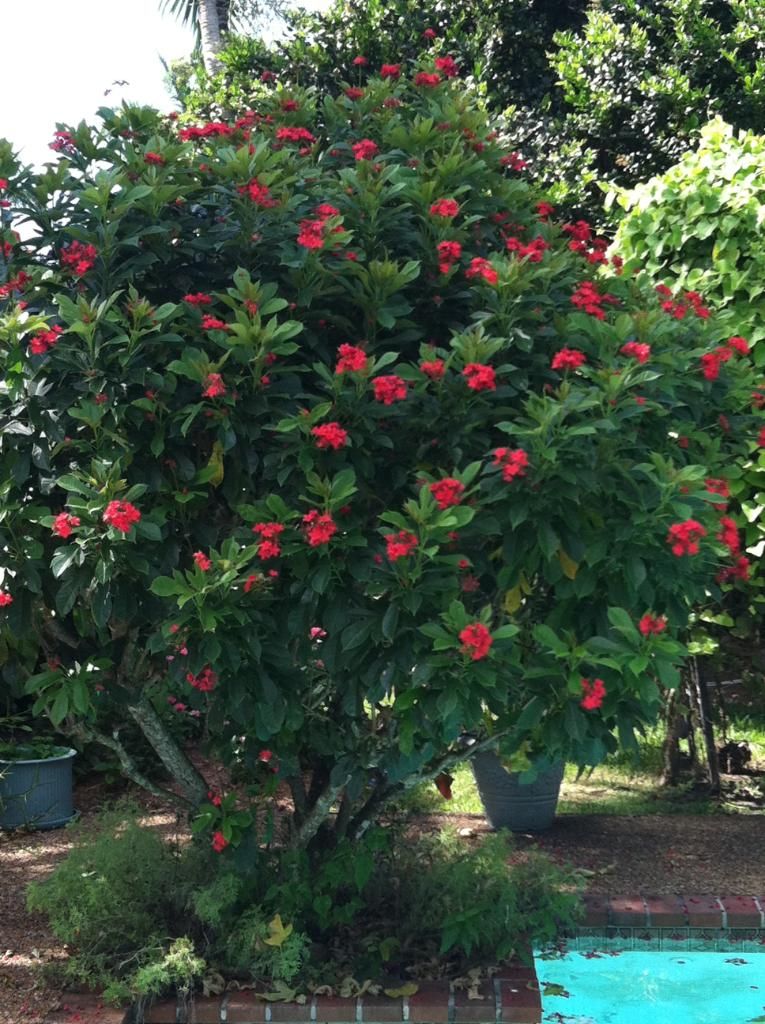 |
When I was at my favorite nursery, Galloway Farms, I saw this plant that seemed to have a lot of bees attracted to it. I was a little worried about how well it would grow here in Miami, because it looked like a succulent, and they told me not to water it too often. With all the rains in Miami I didn’t think it would thrive. I did a little research and found out that it actually would do quite well in South Florida. In fact, they said it was the perfect perennial for South Florida because Bulbine is drought tolerant, grows well in poor soils, and blooms repeatedly with cheerful flowers that are yellow or orange, depending on the variety. It is suited for gardens in USDA Zones 9-11 and is hardy to the low 20s. The succulent, grass-like foliage grows to about a foot tall, while the flower stalks typically reach two feet, dancing above the leaves throughout the summer months. Bulbine was named a 2006 Plant of the Year by the Florida Nursery Growers and Landscape Association. It is generally sold under the scientific name Bulbine frutescens, though some nurseries use the synonyms B. fruticosum or B. caulescens. It has done very well in my garden and the bees absolutely love it. I always see honeybees visiting the flowers and their pollen baskets on their legs are full of pollen. It was definitely a good choice.
I want to add one more pictures of my Mexican Sunflower. It has been well established in my garden and the butterflies absolutely love this plant. I have discovered that a little native bee also loves this flower. I have several pictures of them gathering pollen. I think you should be able to see the little pollen baskets just full of bright yellow orange pollen. They seem to love this composite flower and just kind of sit on the disk being cushioned by all the pollen they are gathering.
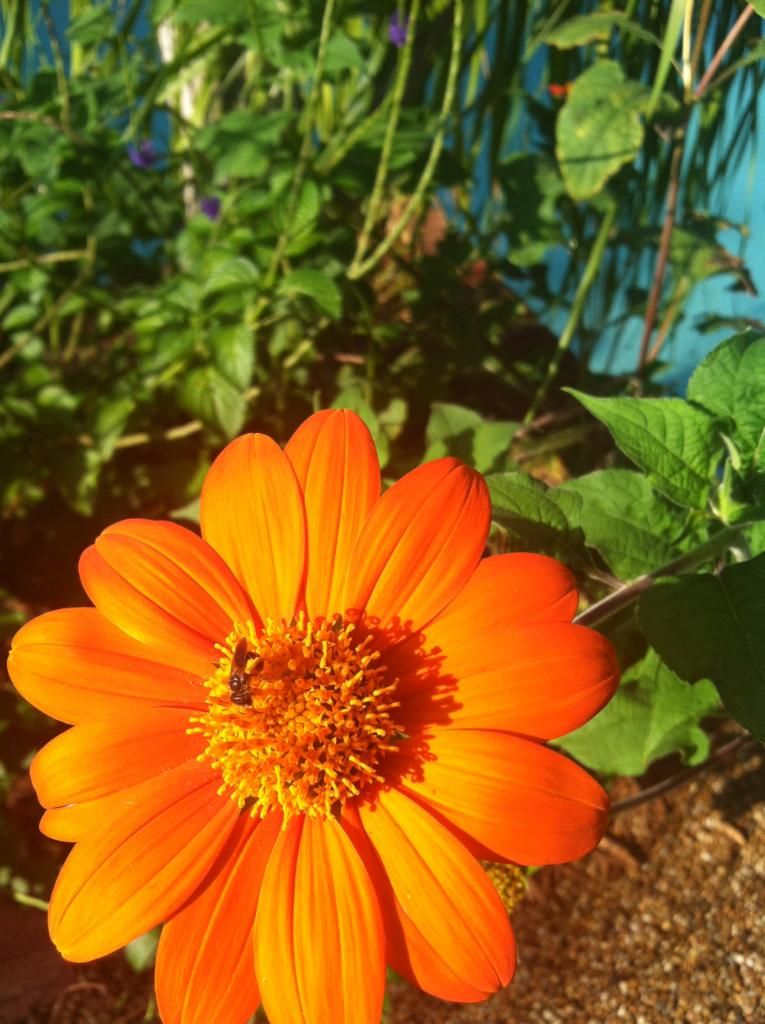 | 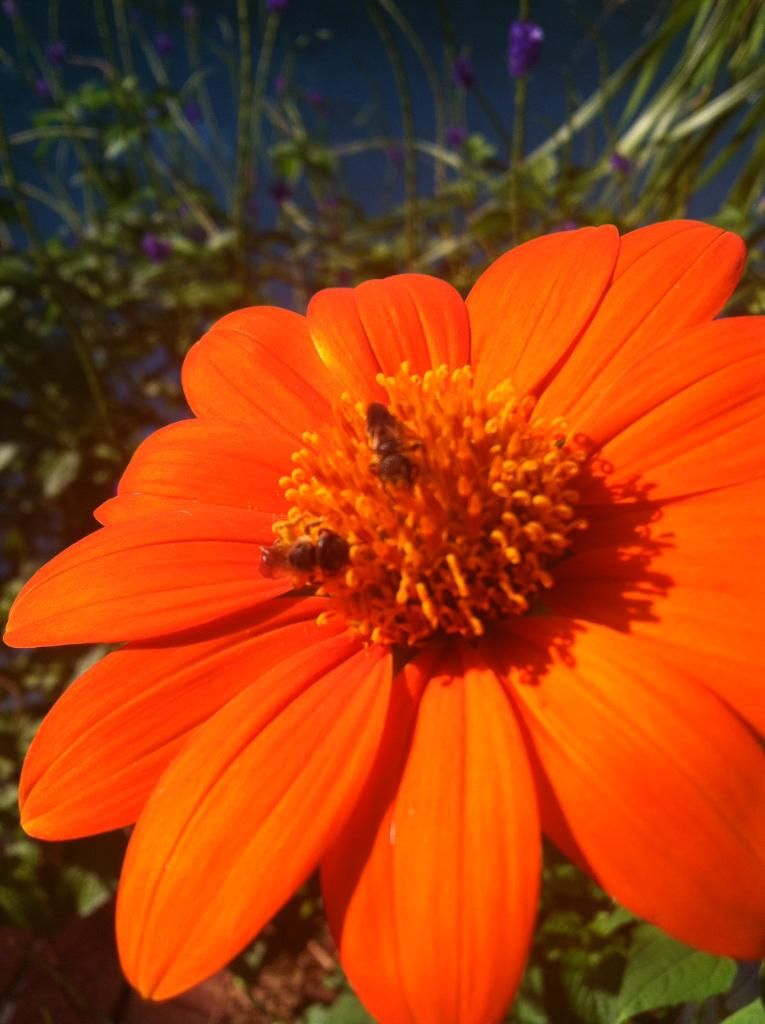 |

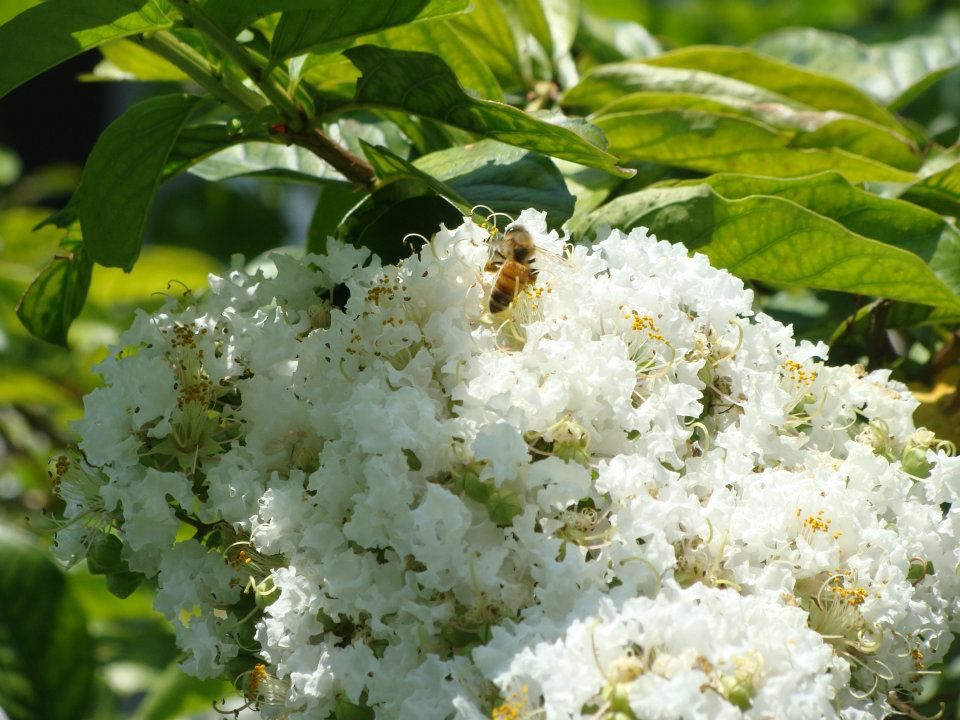
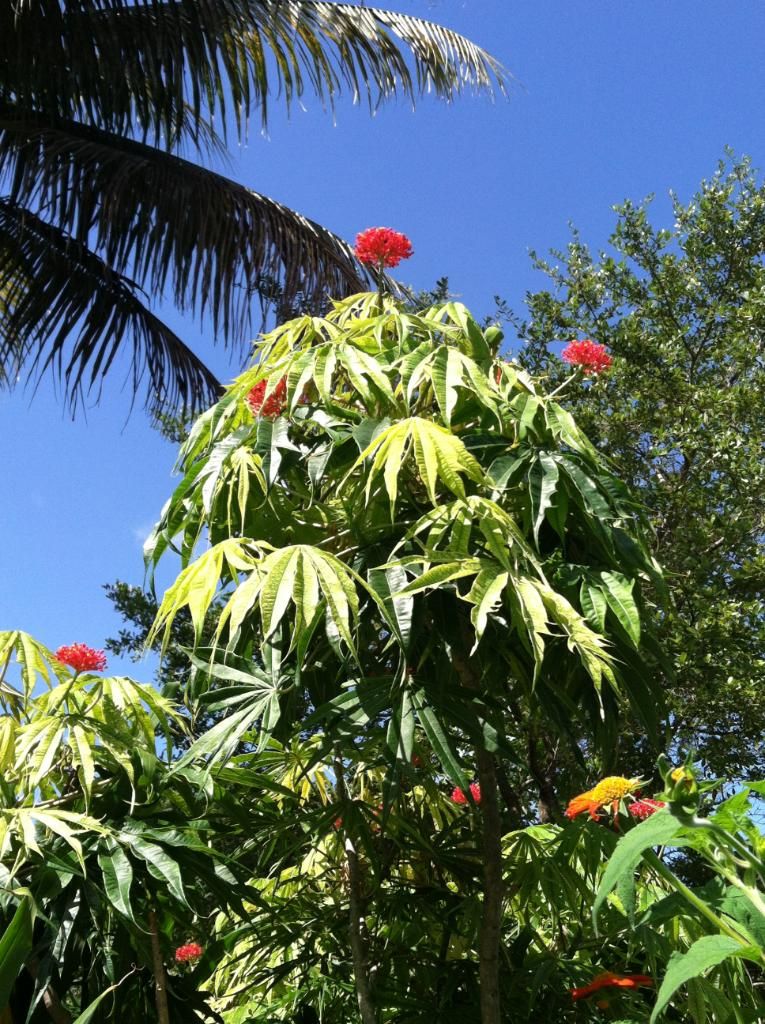

No comments:
Post a Comment